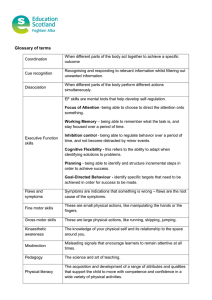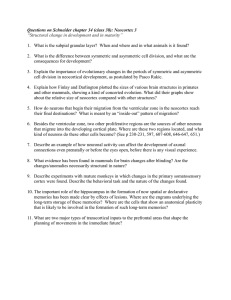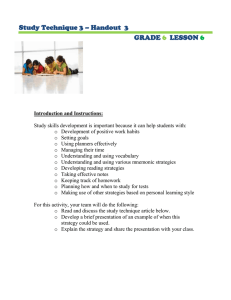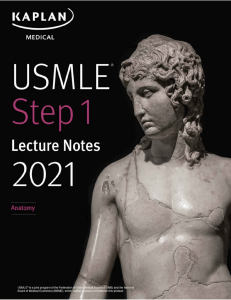9.01 - Neuroscience & Behavior Fall 2003 Massachusetts Institute of Technology
advertisement
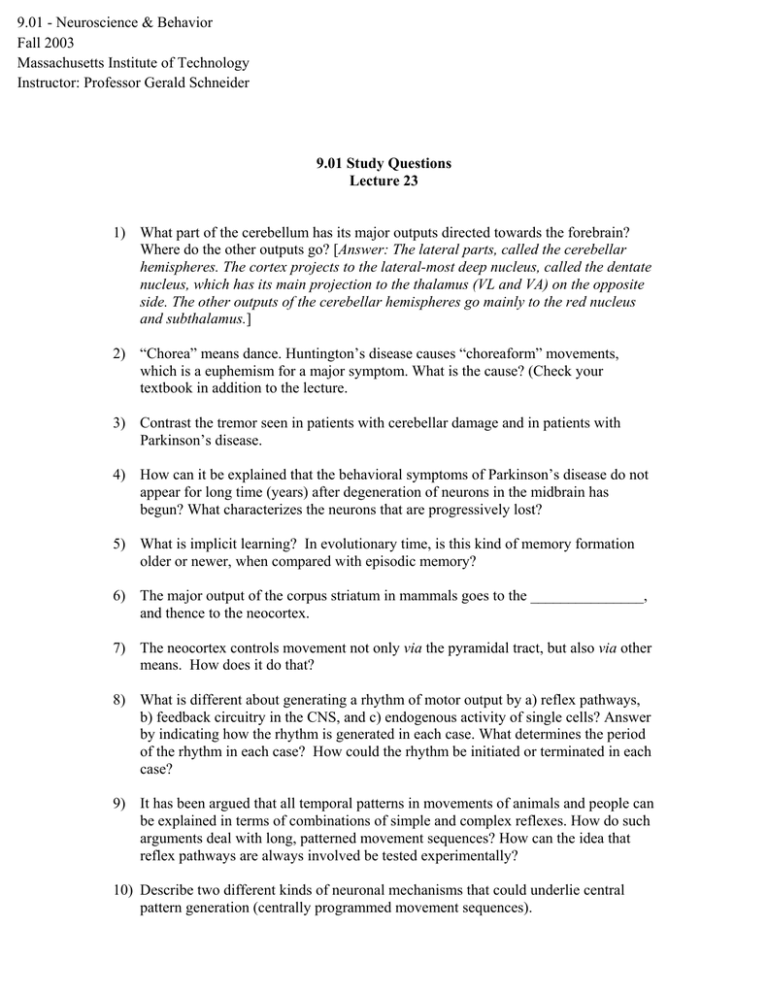
9.01 - Neuroscience & Behavior Fall 2003 Massachusetts Institute of Technology Instructor: Professor Gerald Schneider 9.01 Study Questions Lecture 23 1) What part of the cerebellum has its major outputs directed towards the forebrain? Where do the other outputs go? [Answer: The lateral parts, called the cerebellar hemispheres. The cortex projects to the lateral-most deep nucleus, called the dentate nucleus, which has its main projection to the thalamus (VL and VA) on the opposite side. The other outputs of the cerebellar hemispheres go mainly to the red nucleus and subthalamus.] 2) “Chorea” means dance. Huntington’s disease causes “choreaform” movements, which is a euphemism for a major symptom. What is the cause? (Check your textbook in addition to the lecture. 3) Contrast the tremor seen in patients with cerebellar damage and in patients with Parkinson’s disease. 4) How can it be explained that the behavioral symptoms of Parkinson’s disease do not appear for long time (years) after degeneration of neurons in the midbrain has begun? What characterizes the neurons that are progressively lost? 5) What is implicit learning? In evolutionary time, is this kind of memory formation older or newer, when compared with episodic memory? 6) The major output of the corpus striatum in mammals goes to the _______________, and thence to the neocortex. 7) The neocortex controls movement not only via the pyramidal tract, but also via other means. How does it do that? 8) What is different about generating a rhythm of motor output by a) reflex pathways, b) feedback circuitry in the CNS, and c) endogenous activity of single cells? Answer by indicating how the rhythm is generated in each case. What determines the period of the rhythm in each case? How could the rhythm be initiated or terminated in each case? 9) It has been argued that all temporal patterns in movements of animals and people can be explained in terms of combinations of simple and complex reflexes. How do such arguments deal with long, patterned movement sequences? How can the idea that reflex pathways are always involved be tested experimentally? 10) Describe two different kinds of neuronal mechanisms that could underlie central pattern generation (centrally programmed movement sequences). 11) Give an example of rhythmic motor output and how stimuli from outside the CNS can modulate the rhythm’s phase, period or amplitude. 12) What is the carotid body, and what is its role? 13) What is the role of "intersegmental neurons" in relation to the generation of cyclic movement patterns by CPGs (Central Pattern Generators) such as in the swimming of the crayfish or walking of the cockroach? Where would the axons of neurons with a similar role in a vertebrate be found ? 14) Define a “command neuron”.

